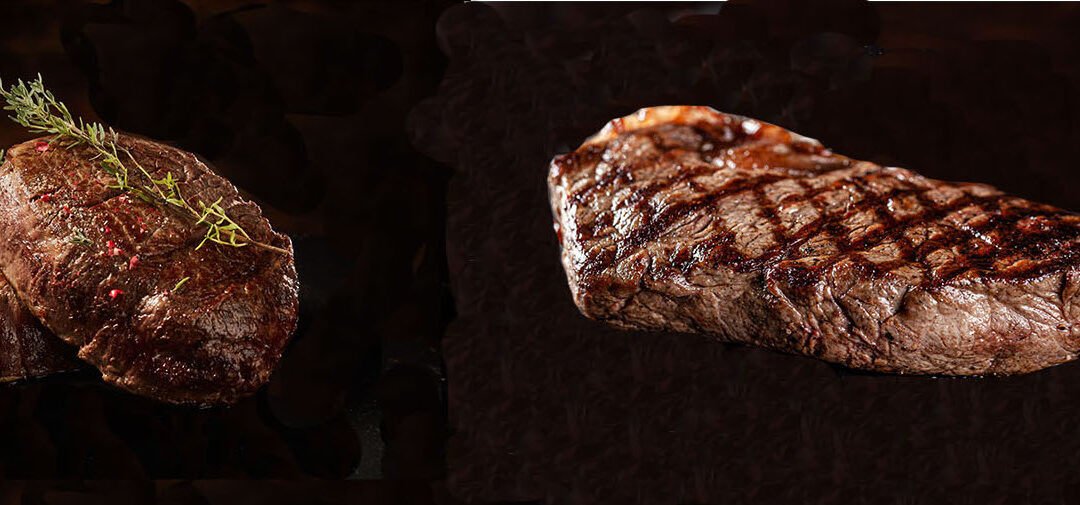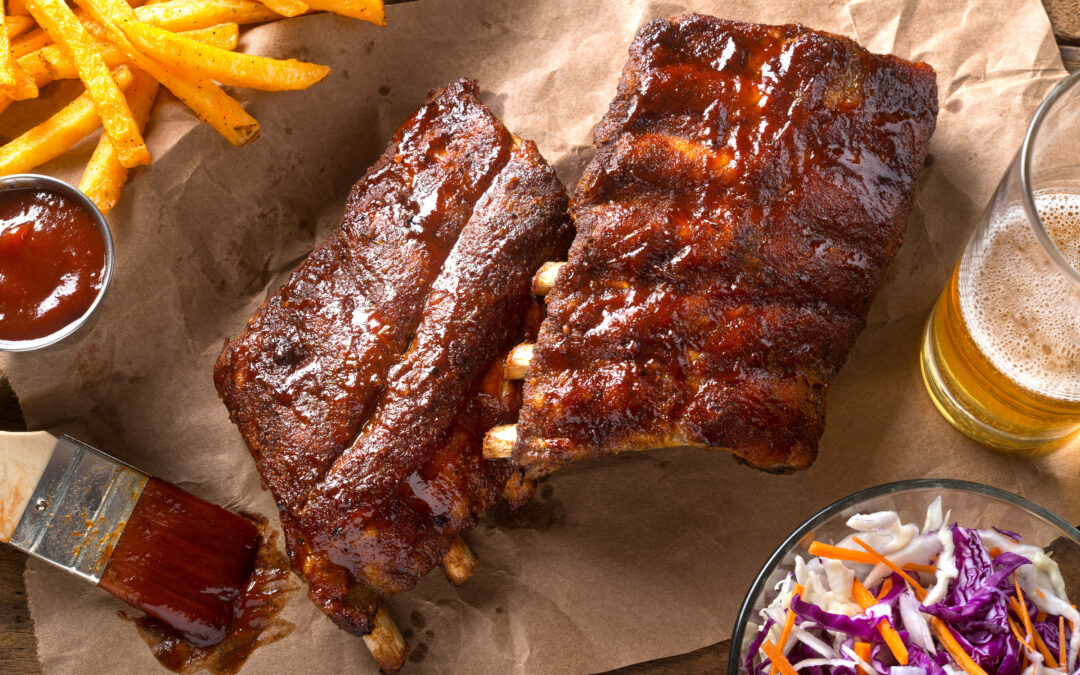Welcome to “Lamb Chops”, we hope that you’ll enjoy our quarterly review of topics ranging from relevant historical facts, to recipes, cooking tips and other topical subjects, all about one of Cattleman’s favorite meats.
Lamb.
It’s said, that you’ve learned your ‘chops”, you’ve gained a very proficient level of skill in a particular area.
At Cattleman’s, it’s our hope that our “Lamb Chops” feature will give you the confidence to try new recipes, expand your knowledge about lamb and both literally AND figuratively, earn YOUR “chops”.
Lamb is not a widely consumed meat in the United States, in fact, it’s barely on the meat “radar screen” compared to many other countries, particularly the Middle East.
This goes back to the times of our early settlers who chose beef over sheep as their meat of preference.
To illustrate this, here is the breakdown of our country’s meat intake per person, per year.
And, believe it or not, the average meat intake, in the U.S., is said to be 283 pounds per person, which is only second to Hong Kong’s 300 pounds per person, the main difference being their larger intake of pork.
The U.S. numbers breaks down as such:
Chicken 129 pounds
Beef 83 pounds
Pork 68 pounds
“Other” 1.8 pounds
Lamb 1.3 pounds
“Other”, is not defined, but we’re imagining venison, and other wild game (including fowl such as duck), are somewhere in that number.
As mentioned, lamb is actually a “go-to” staple in some countries on the other side of the world. With one country in particular, leading the “flock”, so to speak.
And that would be Mongolia, who consume not a measly 1.3 pounds of lamb per person, per year, like here in the U.S., but a staggering 146 pounds!
In this case, their appetite for lamb and mutton stems from a long-standing pastoral tradition.
Lamb is an ancient food (as meat), and it’s considered a delicacy in most countries.
Its taste is described lamb as a gamy, earthy, and even pastoral. The distinct flavor is primarily because of a higher fat content, specifically, branched-chain fatty acids in the meat.
Lamb is usually grass (grazed) fed, which largely contributes to its distinctly earthy taste.
According to the United Nations Food and Agriculture Organization, sheep account for roughly 5% of the world’s meat consumption. Other notable countries who have a love for lamb include countries in North Africa, Central America Asian and Australians, whose Roasted Leg of Lamb is considered a “national dish”.
Being Southeast, Michigan’s “Meat Experts”, Cattleman’s features lamb in many cut options, including: both imported (generally New Zealand), and domestic.
Including many cuts that are nearly impossible to find anywhere else in town.
Such as:
- Rack, (New Zealand, Frenched)

- Loins, (Domestic, both whole and cut)
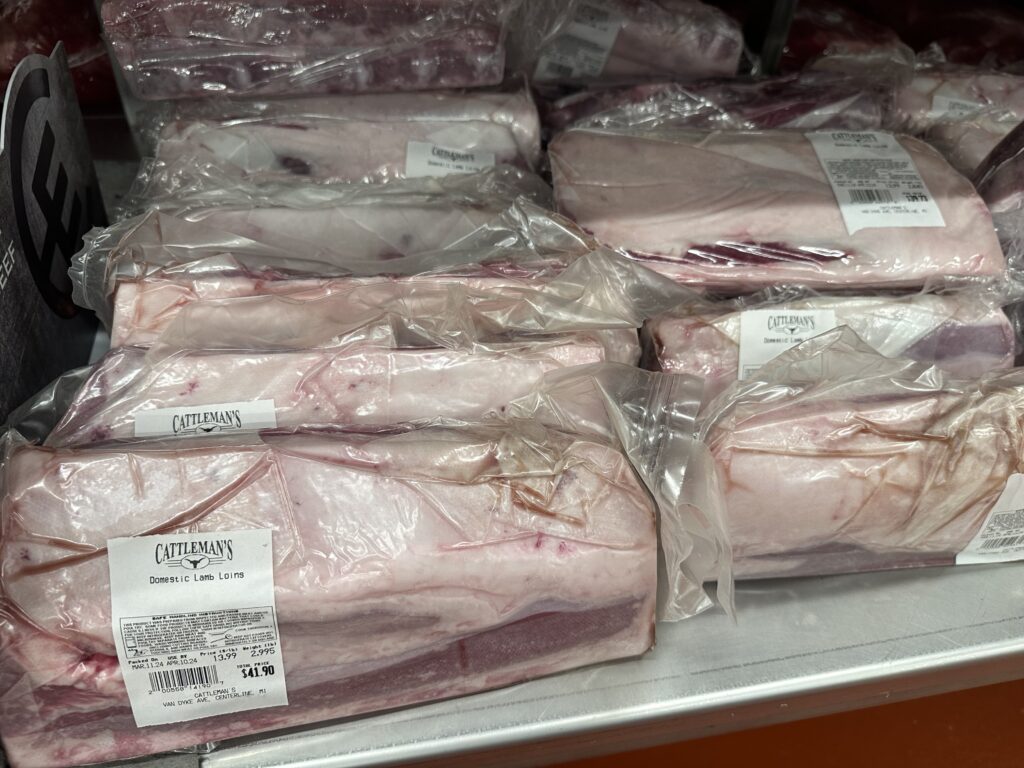
- Lamb Leg, both boneless (rolled & tied) and bone-in

- Lamb Shoulder
- Lamb Shank
- Lamb Spare Ribs

- Lamb Breast (great for grilling)
- Ground Lamb
- Lamb Stew Meat (shoulder)
- The “offal” meats, including: kidney, liver, hearts and tongue.
And of course…
LAMB CHOPS!
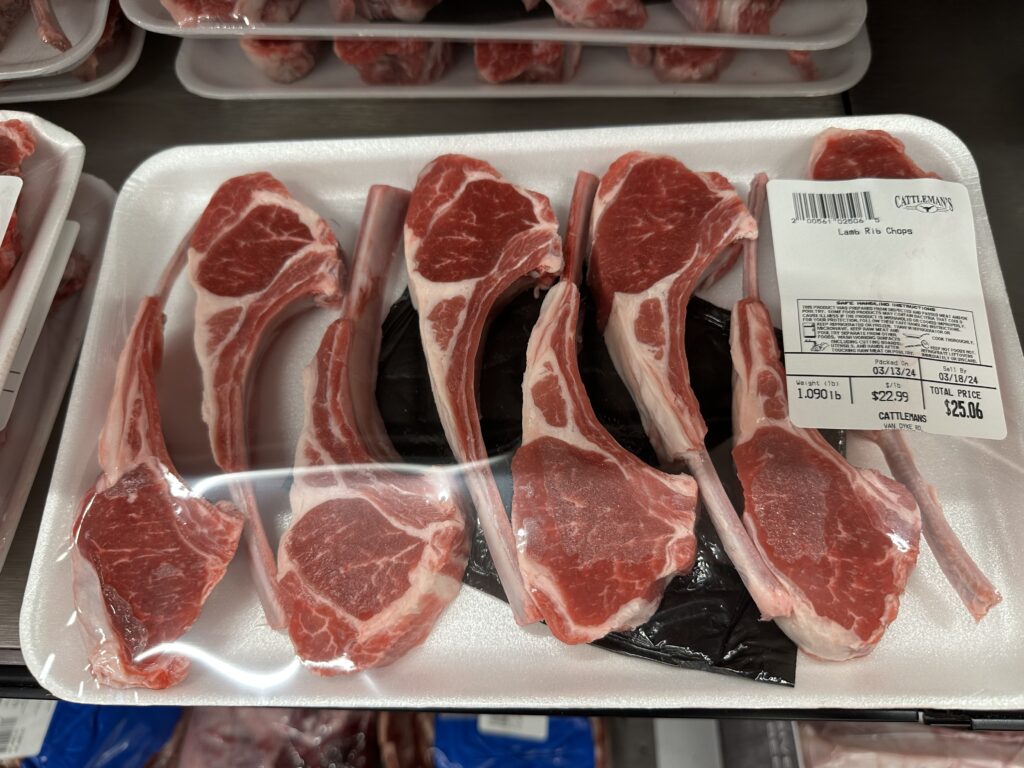
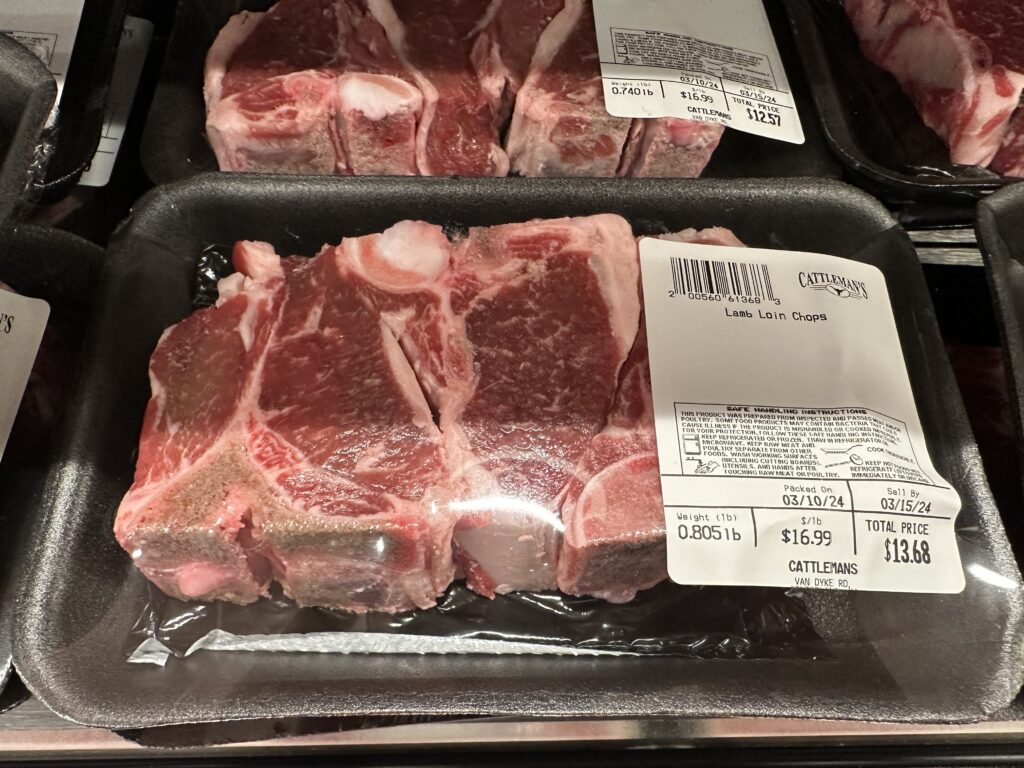
The most popular, by sales, is always our Frenched, Rack of Lamb, however, around Easter, the sales of lamb legs increase dramatically.
Having said that, Cattleman’s is always well supplied with all of your favorite lamb cuts, even during the busy holidays.
If, however, you’re interested in a whole lamb, we offer them as well, and generally have them in-house. However, we do suggest that you reserve one with a 2-day notice. They average about 25 pounds.
Speaking of Easter, we thought we’d share with you some of the basics in preparing a Leg of Lamb as it is one of the traditional meats served, as an alternative to ham.
First, the most common seasoning for lamb, and the one made rather famous in Greece cuisine. is the well-known a la Grecque style lamb, consisting of chopped fresh garlic, fresh oregano, fresh rosemary, fresh thyme, lemon, cracked black pepper and olive oil.
As you can imagine, nearly every Chef has their spin on these classic ingredients, of which one, is adding Dijon mustard as part of the wet rub before roasting.
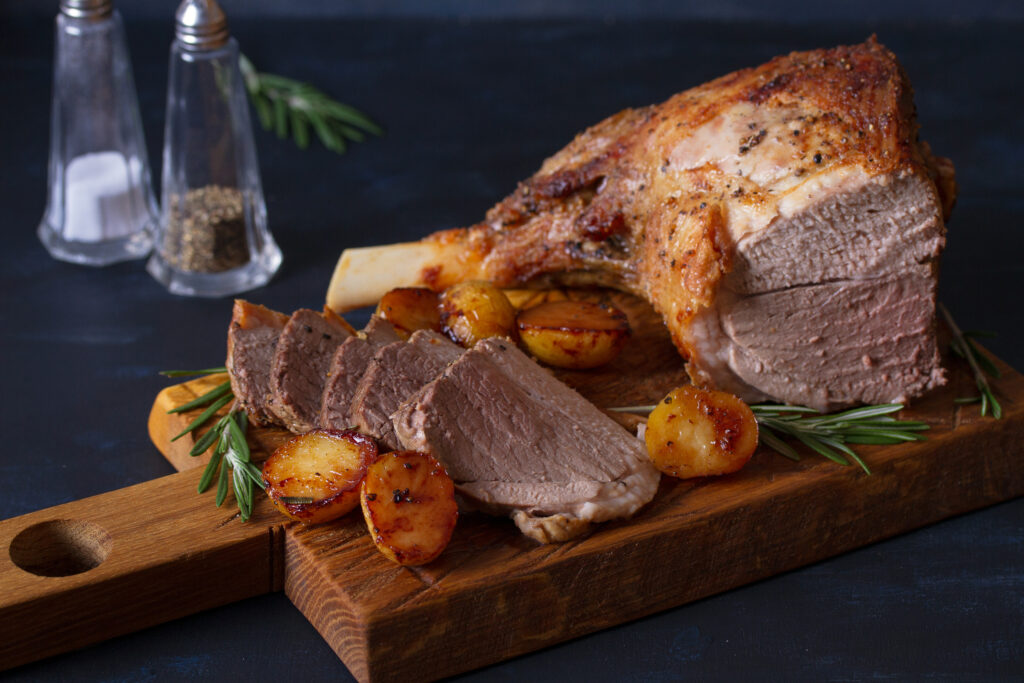
Roast Leg of Lamb a la Grecque
Feeds approximately 6 to 8 persons.
1 – 4-to-5-pound, Leg of Lamb
¼ cup. Extra Virgin Olive Oil
¼ cup Dijon Mustard
½ cup (divided), Freshly Squeezed Lemon Juice
¼ cup , Chopped Fresh Garlic
2 tablespoons, Chopped Fresh Oregano
2 tablespoons, Chopped Fresh Rosemary
1 tablespoon, Chopped Fresh Basil
1 teaspoon, Chopped Fresh Thyme
1 tablespoon, Freshly Cracked Black Pepper
1 teaspoon, Kosher Salt
As Needed: Non-Stick Vegetable Spray
*Non-Classic Option: 1 Cup Seasoned Bread Crumbs
- Pre-heat your oven to 400 F and have a roasting rack available to place the leg of lamb on while it is roasting. This will allow the lamb to roast evenly on all sides.
- Whisk together the mustard and the olive oil until well blended, then slowly add ¼ cup lemon juice, while whisking, to create a smooth, creamy dressing.
- Stir in the chopped garlic, fresh herbs, pepper and salt to complete this wet rub.
- If you have purchased a bone-in lamb, score the leg meat with ¼” deep slits in a crisscross pattern spacing the slices 1” apart. Do this on both sides.
- If you have purchased a boneless leg of lamb, it’s probably netted and you will skip this step.
- Rub the leg with ¼ cup of lemon juice and allow it to rest 15 to 30 minutes.
- Using a basting brush, coat the leg with the prepared wet rub equally on both sides.
*NOTE: If you wish to try the Non-Traditional addition of topping now, with bread crumbs, sprinkle them evenly over only one side of the leg now. This will be the top side as it roasts in the oven. You will not, as a result, turn the roast over as it roasts but always keep this side up. It will be the presentation side. This method WILL NOT work well for a boneless, netted leg of lamb since the breading will all flake off the roast while cutting off the netting for service.
Spray the rails of the roasting rack with non-stick vegetable spray, then place the leg of lamb on the rack.
Place your roast into the oven and roast at 400F for 20 minutes only, then reduce the oven temperature to 325F for the remainder of the time.
If you enjoy roasted potatoes with your lamb, Yukon Gold or Red Skin potatoes are favorites, cut them into 1” to 1 ½” pieces and toss them in a bit of olive oil, garlic and some of the same herbs used in your wet marinade.
They can then be added to your roasting pan, right along with the lamb, once you feel you have 45 minutes to 1 hour left of roasting time left.
ADDITIONAL NOTES:
- Go for smaller lambs. In Greece, lambs are generally smaller, the meat tastes better and is tender. Better to choose 2 smaller pieces rather than one larger one.
- Do not use garlic powder. Period.
- Don’t trim too much fat off the leg of lamb. Fat is good and especially needed if roasting potatoes with the lamb.
- Do not overcook as this will result in a dry piece of meat.
- Cooking times can vary depending on the calibration of your oven and the starting temperature of your lamb leg. An insta-read thermometer is ALWAYS your best bet for accurately determining the doneness of your lamb. Just be sure you poke at least 1 inch deep into the meat and that it isn’t poking right at the bone.
An average leg of lamb is around 4 to 5 pounds. Therefore, it is about 2 hours of cooking time.
The USDA recommends that lamb should be 145°F (63°C) before eating. This is considered well-done, which incidentally, is rather common in Greece.
Many cooks however, recommend that lamb be enjoyed at medium though, which is 130-135°F.
If you prefer a different level of doneness, follow the guide below.
Rare: 120°F – 125°F
Medium-rare: 125°F – 130°F
Medium-well: 135°F – 140°F
Well-done: 140+°F (60+°C)




